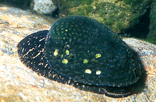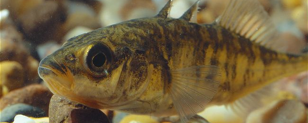Conservation Genetics

Information on genetic diversity, genetic variation, and phylogenetic relationships can help guide management and recovery of imperiled aquatic species. We are working with colleagues at several museums, universities, as well as state and federal management agencies to characterize the status and trajectories of imperiled aquatic species across the world. This research has largely focused on freshwater fishes and invertebrates in North America (Haas et al., 2010; Haas et al., in review) and Hawaii. We have also carried out studies on reproductive strategies of freshwater mussels (Ferguson et al., 2013), responses of stream fish to water impoundment, population connectivity and source tracking of Nile Crocodiles across Africa (Hekkala et al., 2010), species discovery of crocodilians (Hekkala et al., 2011), and taxonomic re-assessment of extinct frogs in the desert southwest of North America (Hekkala et al., 2011). We are currently assessing (1) impacts of climate change and invasive species on the resiliency of stream fishes on oceanic islands; (2) host-parasite relationships between three-spine sticklebacks and Schistocephalus cestodes (e.g., Sprehn et al., 2015; Strobel et al., in review); and (3) plant-antagonist interactions involving invasive Chinese tallow trees across the southeastern US (e.g. Hazen and Blum, in review; Hazen and Blum, in review).
Conservation genetics of aquatic species

Related links
-
•Hekkala Lab- http://www.fordham.edu
-
•AMNH Center for Conservation Genetics- http://research.amnh.org/genomics/Programs/Conservation-Genetics
-
•Rocky Mountain Center for Conservation Genetics and Systematics- http://www.rmccgs.usgs.gov/
-
•UCLA Conservation Genetics Resource Center- http://www.ioe.ucla.edu/ctr/cgrc/index.html
-
•The Yale Institute for Biospheric Studies- http://www.yale.edu/yibs/research/ecolab.html
-
•Ferguson, C.F., Blum, M.J., Raymer, M. , Eakles, M.S., Krane, D.E. 2013. Population structure, multiple paternity and long-distance transport of spermatozoa in the freshwater mussel Lampsilis cardium (Bivalvia: Unionidae). Freshwater Science 32: 267-282.
-
•Haas, T., Blum, M.J., Heins, D.C. 2010. Morphological responses of a stream fish to water impoundment. Biology Letters 6: 803-806.
-
•Haas, T., Heins, D.C., Blum, M.J. Chronosequence of morphological change in a stream fish following dam construction. (in preparation)
-
•Haas, T., Heins, D.C., Hood, C.S., Blum, M.J. 2015. Predictors of body shape variation in a stream fish (Cyprinella venusta, Cypriniformes: Cyprinidae). Biological Journal of the Linnean Society.
-
•Hekkala, E.R., Amato, G., DeSalle, R., Blum, M.J. 2010. Molecular assessment of population differentiation and individual assignment potential of Nile crocodile (Crocodylus niloticus) populations. Conservation
Genetics 11: 1435-1443.
-
•Hekkala, E., Saumure, R., Jeager, J., Werner, H., Sredl, M., Culver, M., Bradford, D., Drabeck, D., Blum, M.J. 2011. Resurrecting an extinct species: Archival DNA, taxonomy, and conservation of the Vegas Valley leopard frog. Conservation Genetics 12: 1379-1385.
-
•Hekkala, E.R., Shirley, M.H., Amato, G., Austin, J.D., Thorbjarnarson, J., Charter, S., Vliet, K., DeSalle, R., Blum, M.J. 2011. An ancient icon reveals new mysteries: Mummy DNA resurrects a cryptic species within the nile crocodile Molecular Ecology 20: 4199–4215 (From the Cover).
-
•Sprehn, C.G., Blum, M.J., Quinn, T.P., Heins, D.C. 2015. Landscape genetics of Schistocephalus solidus parasites in threespine stickleback (Gasterosteus aculeatus) from Alaska. PLoS ONE.
-
•Strobel, H., Sprehn, C.G., Alda, F., Blum, M.J., Heins, D.C. Population genetic structure of a diphyllobothridean cestode parasite is shaped by geography and host lineage. (in review)
-
•Hazen, R.F., Blum, M.J. Deterministic and stochastic factors shape an emergent plant-antagonist interaction. (in review)
-
•Hazen, R.F., Blum, M.J. Host genetic variaion and microenvironment shape an emergent plant-antagonist interaction.
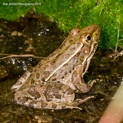

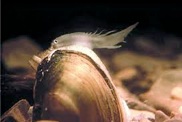



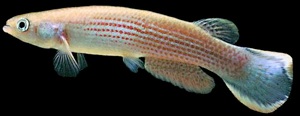

-
•Li, H., Xi, G., Blum, M.J., Zhen, Y., Lin, M., Guo, P. 2011. Genetic diversity of the endangered Chinese endemic plant Monimopetalum chinense revealed by amplified fragment length polymorphism (AFLP). Biochemical Systematics and Ecology 39: 384-391 .
-
•Sprehn, C.G., Blum, M.J., Quinn, T.P., Heins, D.C. Landscape genetics of Schistocephalus solidus parasites in threespine stickleback (Gasterosteus aculeatus) from Alaska (in review).
